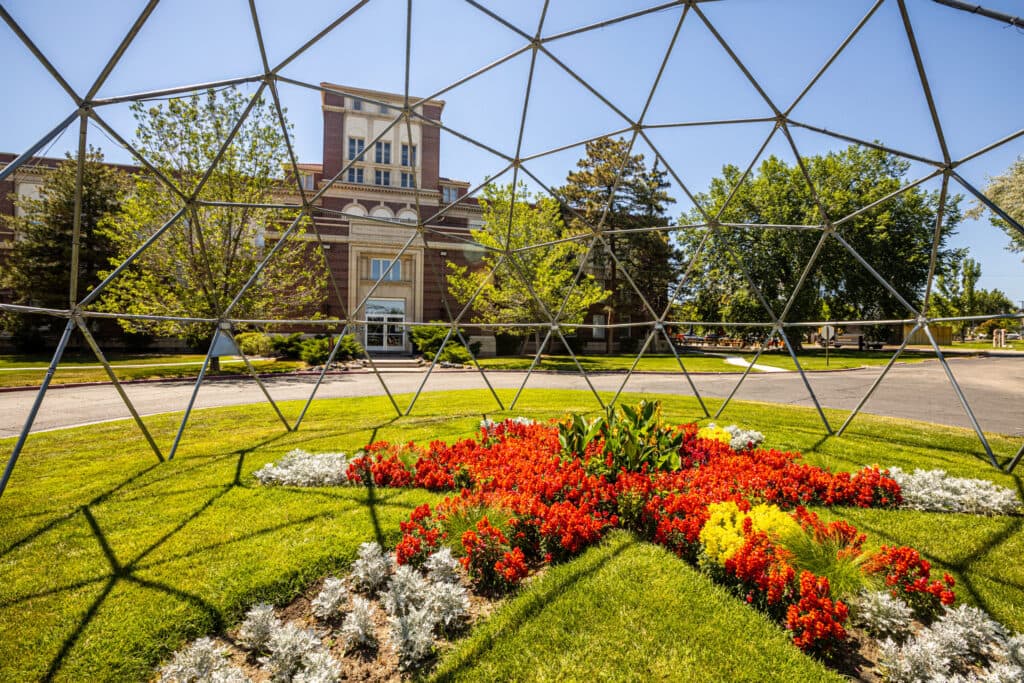When a partnership with the Denver Botanic Gardens (DBG) formed with RMCAD, graphic design sophomore Harry Plymell jumped on the opportunity to be included. While in the partnered Sustainable Design + Pollinators course, Plymell was able to create two sustainably designed children’s books which were accepted into the Denver Botanic Garden’s library. Along with this incredible achievement, Plymell was invited to host a children’s book reading at the DBG Library with one of their books. We sat down with Plymell to learn more about their success as an art student at RMCAD and go behind the scenes into the creation of their children’s book, The Little Beetle.

Tell us about yourself and your academic interests
I’ve worked in print production for quite a while outside of school, and when I heard of the opportunity to create work for the Denver Botanic Gardens I just had to participate. I’ve worked in print shops and taught a class for three years on how to publish literary magazines and small chat books. Bookmaking is kind of my kind of ‘my thing’ and with the Sustainable Design class, I had an excellent opportunity to put that expertise to use.
What was your biggest challenge in the class?
My biggest challenge was trying to make two children’s books in such a short timeframe. After I wrote the book, I then had to map out where the illustrations would be, the text, and make sure that it all made sense. Editing and illustrating took even longer to complete partly because of the watercolors but it was also because illustration is just that hard.
I went through so many different drafts and styles and versions of the main character, Little Beetle. There were many different versions of him and then once I figured out the final version, I drew him in a bunch of different poses from different angles because I knew I would need that to tell a complete story.
How did you choose your pollinator for the class?
In the class, we were all instructed to choose a pollinator that our work would center around. I had many options – bees, birds, butterflies, bats, and more. I eventually chose to center my book around beetles. Most people aren’t aware that beetles encompass many different creatures such as fireflies, ladybugs, and weevils. I spoke to my friends about it. We were talking about how we felt about beetles when we were kids. It sparked an idea of wait a minute, what if I make a children’s book about beetles since we all thought they were cool while growing up. I can inspire them to really care about beetles and give them something that is sustainably-made. That will point them in the right direction with what I want young learners to take away from my books.
Tell us how sustainability plays a role in your design work
Every single aspect of my project is sustainably sourced. From the homemade watercolors made of fruits and vegetables to the recyclable paper the illustrations are printed on. I do my best to think about what happens once my books are at the end of their life. Once someone is done using it, what happens to it? In my sustainability work, I want them to be transformed into something new.
During the class, we visited the DBG several times. We learned the principles and concept behind sustainably-focused design. How you make designs, ensure that your designs are sustainable, and what the lifecycle of a sustainable product is.
To participate in projects like this, check out our online and on-campus Graphic Design programs today. We also recommend reading What you can do with a degree in graphic design to learn more about career opportunities within the field.

